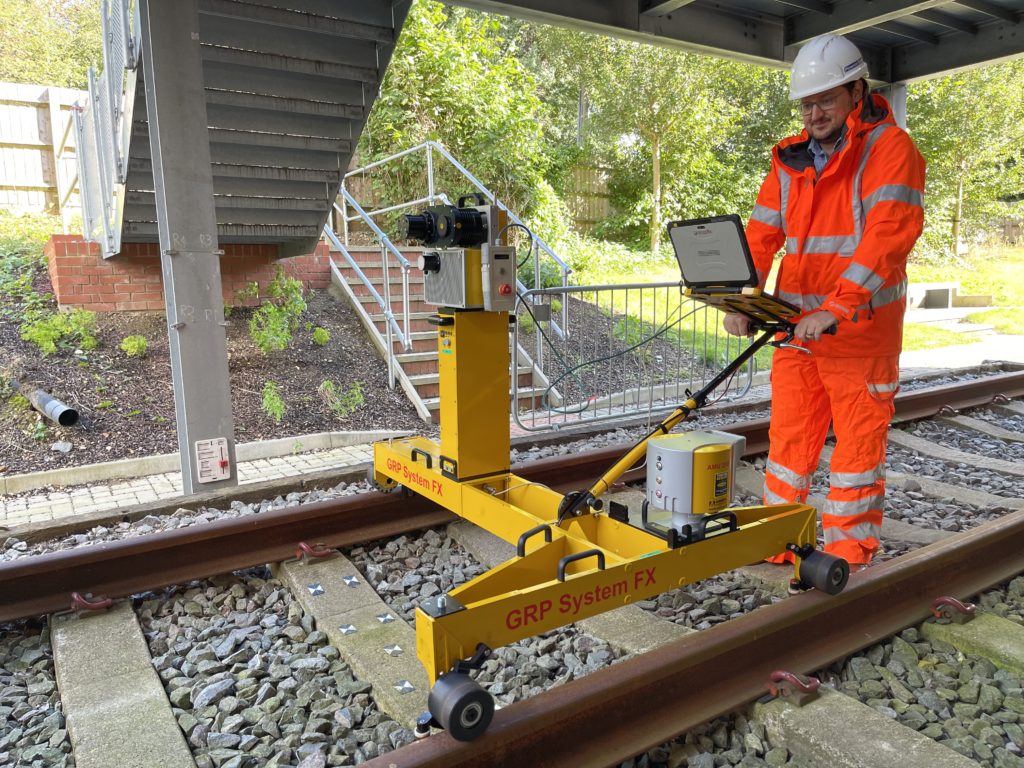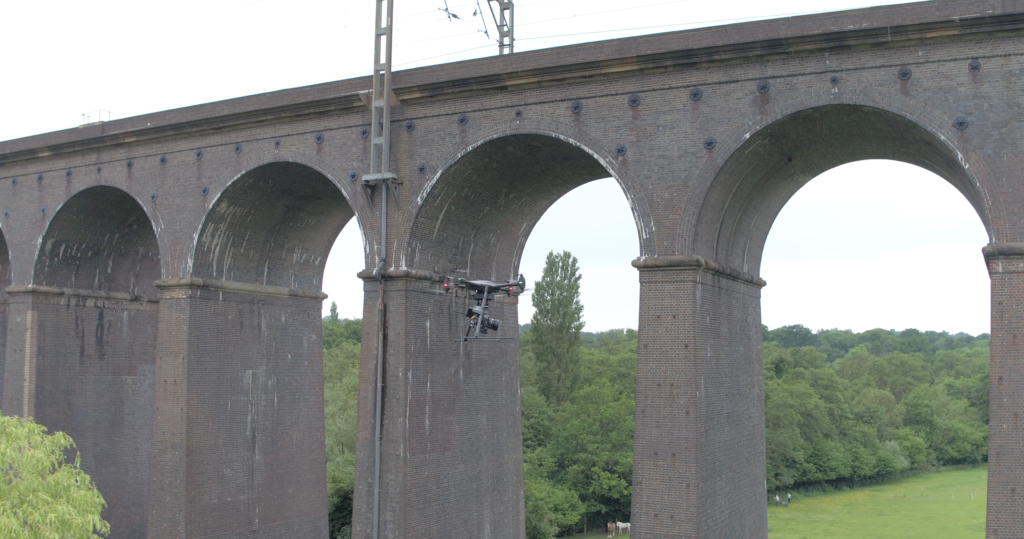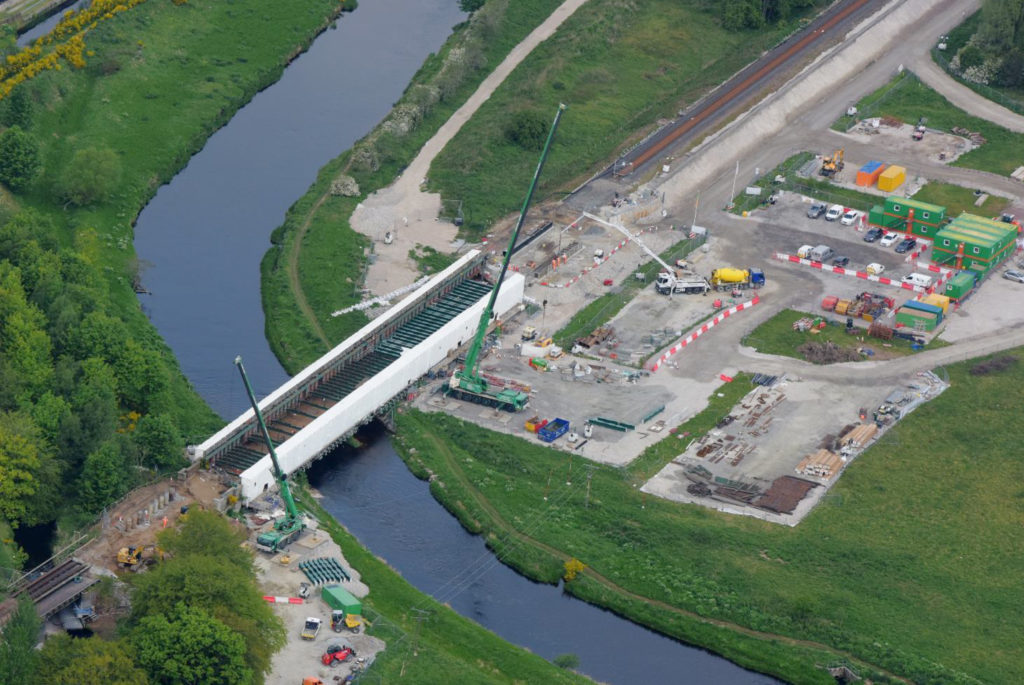As one of the UK’s largest surveying companies, with over 40 years’ experience in the rail industry, Plowman Craven has worked with partners including Transport for London, London Underground and Network Rail. The firm is well used to coming up with innovative solutions to complex problems and has recently invested over £1 million on innovative technology so it can offer the best approach to a rail survey either through ground based or track based or UAV capabilities.
A better way
Historically, the company was involved solely in traditional ‘boots on ballast’ surveying, sending out teams of up to 20 people to survey a portion of track under a night possession. The purchase of their first Amberg Track Trolley helped to conduct those surveys much more efficiently by increasing the speed of survey data capture by many-fold. While the use of this technology was a step forward, it still involved boots on the ground and track possessions, along with all the inherent risks.
“It must have been a few years back when we had a moment where we thought ‘there’s got to be a better way’”, says Technical Director, David Norris. “I think it was a late-night survey on one of the Trans Pennine routes. It was hammering down with rain, freezing cold, and pitch black. You couldn’t see your hand in front of your face, and we were trying to undertake a significant survey of some critical infrastructure that had to be millimetre accurate. We just thought there’s got to be a better way of doing this. That’s when our UAV journey began.”

Plowman Craven began investing in UAV technology, which was gaining popularity among surveying companies at the time. Subsequently, it launched the Vogel R3D, a system that enables comprehensive drone surveys of rail infrastructure to Band 1 accuracy. Since then, the firm has been able to advise its clients on the most suitable survey technique and approach to achieve the best outcome, equally gaining expertise in the traditional as well as drone technology.
Risk mitigation
The advantages to clients of Plowman Craven’s dual approach are multi-fold, but a major benefit of its solutions is the mitigation of risk – be that programme risk, financial risk or the risk to staff working on-site.
“A big problem we had with traditional survey is there’s a huge risk to the programme,” says David. “If a contractor is going to re-engineer a section of track and replace it, the possessions that we get are critical. We might only get a Saturday night possession for three or four hours, and if that doesn’t happen because, for example, a member of safety staff tests positive for Covid and can’t be there, the whole thing is off. This means you then lose that possession, your team of 20 people are stood down, and you then have to apply for another possession which can take another six weeks to get approval.”
Any technology or technique which reduces the time on track, or the need for ‘boots on ballast’ at all, is more cost effective for the client and the programme as a whole. It also has enormous advantages for those staff expected to carry out the work. Using their UAV, which can hover above the track at 25m, data can be captured from a position of safety even during traffic hours, removing the need for possessions and line blocks and drastically reducing the exposure of workers to risk. And the firm is working hard to further refine the system, says David. “There are still, very sadly, fatalities on track and many near misses, across the rail industry. We’re continually trying to improve the way it collects data, reducing even further the amount of access to the track that we need, even to the point where we don’t need any track access at all in certain situations so we can survey the track completely remotely.”
The right approach
Drones can’t do everything, however, and the company can advise in one conversation on whether to use their ground-based approach or a UAV, depending on the circumstances.
To complement their UAV system Plowman Craven have recently invested in the latest Amberg IMS5000 system which can simultaneously measure rail positions, 3D point cloud and gauging data of up to 4km of track per hour.
“Our advantage is that we’ve got all sides covered,” says David. “We’ve got the best of both worlds because no one system can do everything. People get extremely excited about drones, and they are a fantastic technology if used in the right way. But it needs to be combined with a comprehensive knowledge of surveying in the rail environment.”

An advantage of working on the track is that you can take very precise, direct measurements of your immediate surroundings. However, during a track possession, time is a very valuable commodity. Plowman Craven make the best use of the technology available to them to gather data quickly and accurately.
“An interesting project using the Amberg IMS system took place on the South Wales Metro Project,” says Tom Wren, Head of Client Solutions – Rail and Infrastructure. “That was one of the projects where we said, ‘It’s easier to use the Amberg system on this, and we can do kilometres of track per night because we have the access.’ We’ve done about 100km of track on the Valley Lines and into Cardiff. Using the trolley was the quickest way of completing that survey, where we had short periods of access overnight.”
Where the complexity of the project demands it, the firm will use a combination of all its airborne and ground-based solutions to get the required data. An example is the work it carried out for Network Rail on the Aberdeen to Inverness improvement route, which included surveys of the track and the Don Viaduct. “We needed to deploy everything on that,” says David, “Measuring track from above, measuring the underside of the structure from the ground, producing 3D models and track alignments and every product we could think of. We even did 360-degree photography from the sky that they used for stakeholder engagement with the public.”

Conclusion
The dual technology that the company brings to the table is tried and tested. The innovation lies in the way the firm uses the technology, combining its capabilities to achieve the best result. Over 200 clients have already benefitted from these techniques and the firm’s methods are fully approved. Indeed, Network Rail has described its techniques as “An absolute gamechanger to surveying in the rail environment.” It’s not just having the equipment, it’s knowing how to employ it, and Plowman Craven are experts on both.

